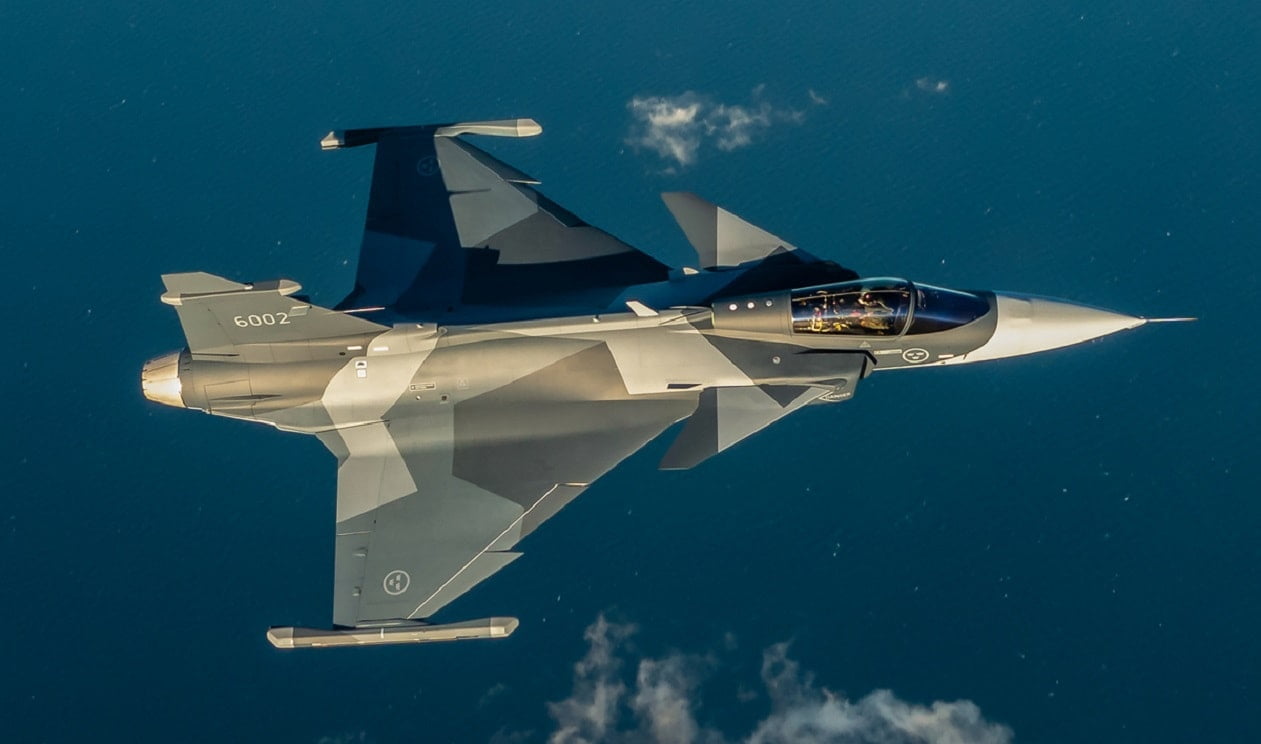According to headlines in the media, SAAB, a Swedish aerospace company, has offered the Indian Air Force a JAS 39 Gripen for half the price of a Dassault Rafale. The SAAB Group is attempting to sell its jets to the Indian Air Force, but it is in vain. In this post, we’ll look at why the chances of the Indian airforce choosing JAS 39 Grippen over the other contenders in MMRCA 2.0 are little to none.
JAS 39 Gripen
The Saab JAS 39 Gripen is a small single-engine multirole fighter aircraft designed and built by Saab AB of Sweden. With a relaxed stability design and fly-by-wire flying controls, the Gripen sports a delta wing and canard layout.
The Gripen was created to replace the Swedish air force’s ageing JAS 37 Viggen and JAS 35 Draken fighters. Gripen is currently destroying the Brazilian, South African, Czech, and Royal Thai air forces, in addition to the Swedish air force.
It is powered by a Volvo RM 12 engine, which is a version of the GE f404 engine from the United States. This fact will be discussed in greater depth later.
Whenever the Indian Air Force acquires something, it becomes a brand advocate for that item. The world is watching to see what the world’s fourth-largest airforce is adding to its ranks. Rafale has virtually been an export success since it was introduced into the IAF.
Following India’s procurement, the UAE has placed an order for 80 Rafales from France. The Indian Air Force is a potential export success for SAAB’s Gripen. That is why it is vigorously pushing Gripen to the IAF. The Gripen as a product may be excellent, but we shall explore why the Indian Air Force will not accept this aircraft into service. There are three major causes behind this. Let’s take a closer look at them.
Dassault Rafale
Going for follow-on orders for Rafale makes more sense for the Indian airforce, as we’ve highlighted several times. Because the Indian Air Force and the Indian government have invested extensively in the infrastructure and India-specific improvements necessary for Rafale, procuring a Rafale in the MMRCA 2.0 will be a viable option.
Furthermore, because pilots have already been trained on the Rafale, purchasing additional Rafales will be less time-consuming, logistically simple, and, of course, less expensive. We used to have the advantage of relocating the Rafale manufacturing line to India, but now that the UAE has inked a purchase for 80 Rafales, it appears that this is no longer possible.
LCA Tejas
Let’s go on to the next major cause, the Tejas Factor. The Tejas, which was constructed entirely in India, is comparable to the JAS 39 Gripen. Both fighters are powered by GE f404 engines in various configurations.
In addition, the Indian Air Force has placed an order for 83 Tejas MK1A aircraft. Tejas is a younger platform than Gripen, and as a result, it is considerably more vulnerable to newer technologies than Gripen. The Tejas MK II is also in the works. If the Indian Air Force need a single-engine fighter, the Tejas and Tejas MK II, rather than the Gripen, are the best options.
The Problem with General Electric
Let us now look at the most important factor, which is the overall electric problem. The Indian government completed an agreement with SAB to buy the JAS 37 Viggen in 1978, under the leadership of Rajiv Gandhi. The transaction was thwarted by the United States, which put a ban on derivatives of American engines used in Viggen.
Instead of Viggen, the Indian Air Force ordered Jaguars, which are still active today. Even after three decades, the tale is nearly unchanged. The F 21 and F/A 18 super hornets from Lockheed Martin and Boeing are participating in the same competition that the Gripen is hoping to win. As previously stated, the Gripen is powered by a Volvo RM 12 engine, which is a derivation of the American GE F404 engine.
Let us imagine, despite all odds against Gripen, that Gripen is chosen over F-21. Will the United States ever allow this to happen? History is going to repeat itself. The engines will undoubtedly be subject to an embargo by the United States.
Conclusion
As a result, we may deduce that India’s MMRCA 2.0 programme is unlikely to include the Gripen. The Indian Airforce, not SAAB, should persuade its other potential clients.
